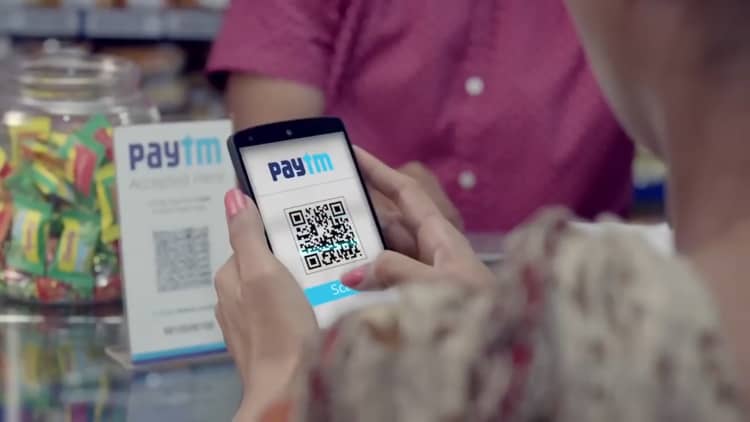
The number of digital transactions in India has quadrupled since Prime Minister Narendra Modi pulled nearly 90% of banknotes from circulation last year.
It's welcome news to Modi's government who are on a mission to reduce India's reliance on cash in order to crack down on corruption.
The results have been mixed for every day consumers, but one thing is clear – the historic shake-up has left India's digital economy booming.
Electronic payment companies in India have experienced a huge growth since the demonetization.
E-commerce company, Paytm jumped more than 400 percent in the hours after that cash crunch.
In just 8 months, Paytm managed to sign up more than 220 million people. Paytm CFO Madhur Deora said his company has seen remarkable success post-demonetization.
"Just before demonetization in November 2016, we had 700-thousand merchants. Post-demonetization, we upped it and then we started signing up to 40-50 thousand merchants every day," Deora said.
Its mobile-wallet app allows users to shop at bakeries and even fruit stands without the exchange of any cash.
The surge in growth has helped Paytm go beyond just the digital payments space, expanding its e-commerce business to now offer loans, banking and even gold.
Its "digital gold service" allows users to buy and sell the precious metal and even store them digitally in a government certified vault.
"Everyone in India saves using gold. If they save, they save using gold. So we want to offer digital gold as a product that is available to everybody, that everybody understands," Deora said.
Big name investors have already come calling; Alibaba and Softbank have invested more than $2 billion combined in Paytm, making it one of only a handful of Indian tech unicorns.
But Paytm's path to dominance has faced new competition from India's traditional banks who have developed their own digital payments platform.
Using a national registry called Aadgar that records a consumers' biometrics, an ID number is then assigned to those biometrics and is stored in a centralized database.
With the biometrics ID, people don't need to carry around a physical ID, or even a smart phone – all you really need is your fingerprint.
Though Aadhar is not widely used by shops just yet, more than 1 billion people - 95% of the population - have been registered to the scheme; making it the largest biometric ID system in the world.
Yet it's questionable as to whether India's commitment to a cashless society may ever actually be achieved.
Much of the cash that's already been returned to the system and the central bank, India plans to issue new lower denominated bills.
But that doesn't mean the government is backing away from its cashless ambitions.
This year alone, 25 billion digital transactions are set to be processed as part of India's larger goal to transform itself into a trillion dollar digital economy in the next 5 years.






